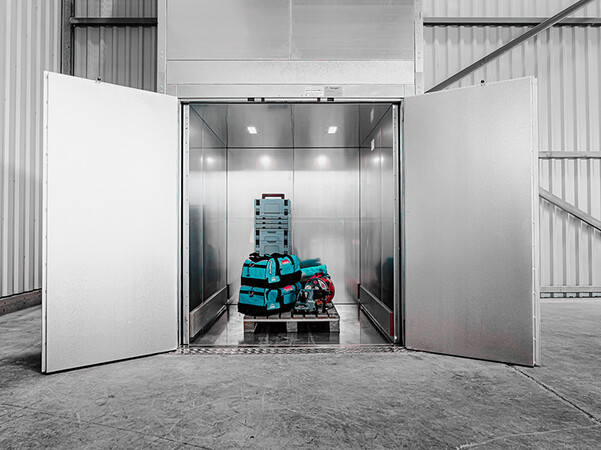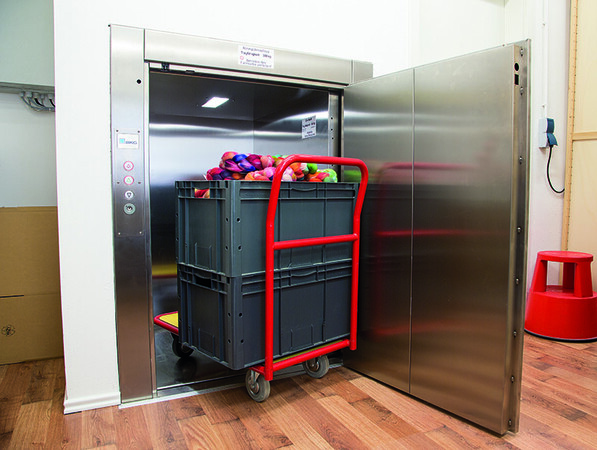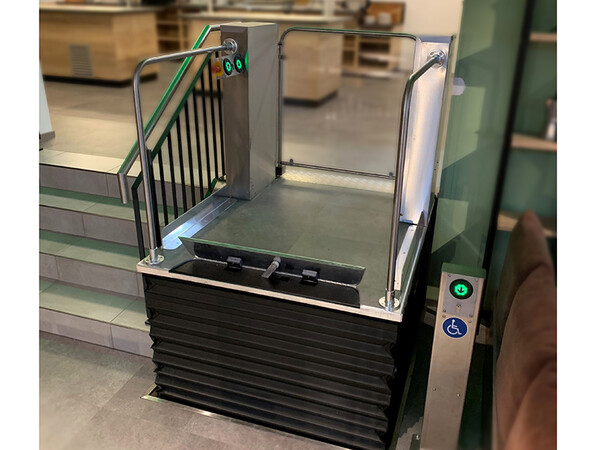Esfandiar Gharibaan the chairman of CEN/TC 10, has summarized the most important facts and changes for the LIFTjournal.
By Esfandiar Gharibaan
1) Background
EU Regulation 2023/1230 on Machinery (Machinery Regulation) is the result of the revision of the Machinery Directive, 2006/42/EC. As this is an EU regulation, it becomes identical national regulation in all 27 EU members without any need for transposition, as it is the case with EU Directives.
Machinery Regulation is the main EU product harmonization legislation for machinery. It is regulating machinery products from the design and manufacturing until the machinery is placed on the market. It is setting obligations for the manufacturers and other relevant market operators. It is providing harmonized legislative, thus mandatory, safety requirements under Essential Health and Safety Requirements. It is also defining Conformity Assessment Procedures (CAPs) to be followed by the manufacturers to demonstrate conformity of their products to the relevant EHSRs before affixing the CE mark and issue of the Declaration of Conformity.
Machinery Regulation covers wide range of products including:
- Machinery
- Partly completed machinery
- Interchangeable equipment
- Safety components
- Lifting accessories and chains/ropes/webbing
- Removable mechanical transmission devices
- And most important for the lift sector, it covers the lifting appliances.
Machinery Regulation also covers new and emerging technologies, such as Artificial Intelligence (AI), Internet of Things (IoT) and Robotics as well as advanced machinery which has less dependency on human operators and has the capabilities to learn and perform new actions that it is not designed for originally. Inclusion of these aspects into the EU legislation for machinery have been one of the main reasons for revising of the Machinery Directive, 2006/42/EC.
2) Relevance of the Machinery Regulation to the lift industry
 Photo: © Bunse-Aufzüge
Photo: © Bunse-AufzügeAlthough the Lifts Directive, 2014/33/EU, is the main EU product harmonization legislation for lifts, more than 50 percent of EHSRs for lifts are defined by the Machinery Directive, and now by the Machinery Regulation. According to the Annex I, section 1.1 of the Lifts Directive, these EHSRs relate to risks which are not covered by the Lifts Directive. Therefore, new and changed EHSRs of the Machinery Regulation may also apply to lifts.
Machinery Regulation does not include explicit definition for its borderline with the Lifts Directive. However, as the Lifts Directive has not been changed, the borderline between the Machinery Regulation and the Lifts Directive remains the same as the borderline with the Machinery Directive. Therefore, lifting appliances with speed greater than 0,15 m/s fall under the scope of the Lifts Directive.
In any case, EHSRs as well as CAPs for several products are fully covered by the Machinery Regulation. These products include:
- Escalators and moving walks.
- Lifting platforms
- Building hoists
- Goods only lifts
- Stairlifts
- Lifts used to access workplaces, such as lifts in wind turbines or in cranes
3) Main changes compared to the Machinery Directive
There are many changes compared to the Machinery Directive and it is highly advisable to read the regulation carefully. However, the main changes may include:
- Increased legal certainty and uniform application: For example, as an EU regulation becomes the national laws in all EU member states without transposition, having EU regulation makes sure that the national regulations are identical.
- Integration of AI related provisions for safety functions: As AI can alter the behaviour of the machinery in an unpredictable way, AI in safety functions is therefore considered as equal to a safety component.
- Integration of Cyber Safety related provisions for safety control systems and software and data related to the compliance to the requirements of the Machinery Regulation: Digitalization is one of the fastest growing aspects in the lift industry. Ensuring Cybersecurity is fundamental for ensuing safety and proper operation of the connected machinery.
- Autonomous and remote-controlled machinery, such as Robots, are being used and sharing the same space with the human. Safe interaction between Robots and human has been a key concern for sometimes and the Machinery Regulation is addressing this.
- Clarification on providing instructions for use, assembly instructions and EU Declaration of Conformity and Incorporation, in a digital form: This provides an opportunity to reduce complexity, costs, and environmental impact of providing those documents in the paper format.
- Mandatory Notified Body conformity assessment for 6 product categories: This includes machinery or safety components using machine learning for their safety functions.
- The Machinery Regulation also empowers the EU Commission to provide common specifications as a fallback option when suitable harmonised standards are not available. Basically, making the EU Commission as standardizer for machinery, when necessary.
- The regulation also streamlines Safeguard Procedures, aligned with other legislation under the EU New Legislative Framework.
4) Main changes of EHSRs
 Small goods elevators such as the Service Line Base D from Bunse-Aufzüge or wheelchair lifts such as the MB850 Duo from Liftwerk (right side) fall under the regulations of the Machinery Regulation. Photo: © Bunse-Aufzüge
Small goods elevators such as the Service Line Base D from Bunse-Aufzüge or wheelchair lifts such as the MB850 Duo from Liftwerk (right side) fall under the regulations of the Machinery Regulation. Photo: © Bunse-AufzügeNew or changes to the current EHSRs directly affect the design and conformity of the products. EHSRs are listed in the Machinery Regulation, Annex III. Examples of new or modified EHSRs, relevant to lifts and escalators, include:
- 1.1.6 "Ergonomics": Modified and a new requirement has been added.
- 1.1.9 "Protection against corruption": This is a new requirement.
- 1.2.1 "Safety and reliability of control systems": Several modifications have been made and new requirements have been added.
- 1.2.6 "Failure of the power supply or communication network connection": Although just the title has been modified, but it makes the requirements also applicable to the communication network connection.
- 1.6.2 "Access to operating positions and servicing points": Requirements for the emergency rescue have been added.
- 6.2 "Control devices": Modifications includes addition of conditions for using automatic stops instead of hold-to-run type control devices. More detailed explanations as follows.
4.1) 1.1.6: Ergonomics
Main change regarding the Ergonomics is addition of clause (b) for avoiding the need for demanding work postures or movements and manual force exertions that exceed the operator’s capacity. This might have influence in the working procedures for maintenance operations.
4.2) 1.1.9: Protection against corruption
Protection against corruption is a new and quite extensive requirements. This requirement addresses the connection between machines or devices and machines in such a way that the connection does not lead to a hazardous situation.
It also requires that the access to software and hardware is protected against accidental or intentional corruption. Here, cybersecurity plays a fundamental role.
Software and data which are critical for compliance of the machinery with the essential requirement need to be identified and protected against accidental or intentional corruption. Here again, besides the design of the software and hardware, cybersecurity plays an important role. In addition, the software installed in the machinery must be always identifiable.
Other important requirement is the obligation to collect information on legitimate or illegitimate intervention, such as cyber intrusion, as well as software update.
Basically, software which plays an important role in safety and conformity to the Machinery Regulation must be identifiable, protected against corruption or intrusion and have the record of changes and interactions with the software in the lifetime of the machinery.
4.3) 1.2.1: Safety and reliability of control systems
Safety and reliability of control systems have been extensively revised. Again, protection against intrusion and corruption is the key.
It is required to record the intervention and version of software installed and its updates, and to keep the record for at least for five years.
EHSR 1.2.1 also addresses the machine learning as well as use of AI. An important point is that machine learning and AI should not cause the machinery to perform actions beyond its defined tasks and movement space.
Data on the safety related decision-making process must be recorded and it should be kept for at least one year and provided to the competent national authority, subject to reasoned request.
4.4) 1.2.6: Failure of the power supply or communication network connection
The title of EHSR 1.2.6 has been changed to include communication network connection. This means that the same requirement due to failure of power supply is also applicable when communication network connection is lost.
4.5) 1.6.2: Access to operating positions and servicing points
Regarding EHSR 1.6.2, access to operating positions and servicing points, a new paragraph has been added. Here, the requirement addresses the emergency rescue of persons entering the machinery for operation, adjustment, maintenance, or cleaning.
4.6) 6.2: Control devices
 Photo: © Liftwerk
Photo: © LiftwerkEHSR 6.2. on Control Devices has also been modified. The key issue here has been the use of automatic stops, instead of hold-to-run, when the carrier is not fully enclosed, such as lifting platforms.
According to the revised requirements, automatic stops may be used with the condition that there is no risk of persons or objects on the carrier colliding or falling and no other risks due to the upward and downward movements of the carrier.
4.7) Digital instructions
The Machinery Regulation clarifies that the instructions and Declaration of Conformity may be provided in digital format, subject to several conditions. For example,
- if requested at the time of purchase, paper format must be provided free of charge.
- it should be marked on the machinery how to access the digital instructions. This could be a QR code.
- it should be described which version of the instruction is relevant to the machinery.
- the format of the instructions must make it possible for them to be stored and printed at all times.
- digital instructions and Declaration of Conformity must be made available 10 years after placing the machinery on the market.
4.8) Substantial modification
One of the major issues, for many years, has been the border line between modifications and when such modification may result in new assessment of the machinery and possible new CE marking.
The Machinery Regulation considers a modification to be a substantial one when such modification creates new hazards or increasing existing risks. For example, if it is necessary to add new guards or protective devices which requires modifications to the existing control system. Or, to have additional protective measure to ensure strength or stability of the modified machinery.
The person who is performing such modification is also responsible for new conformity assessment before placing the modified machinery on the market or putting it into service. This is a serious responsibility, as that person takes the full responsibility for the safety and compliance of the modified machinery.
Repair or maintenance is not considered as substantial modification.
5) Implementation timetable
The Machinery Regulation was published on 29 June 2023 and it was entered into force on 20 July 2023. It will be applied from 20 January 2027 and the Machinery Directive will be repealed accordingly. Therefore, EU Member States and all economic operators have 42 months to prepare.
Important to note is that the voluntary application of the Machinery Regulation is not allowed before its application date. However, relevant preparatory work and transitional arrangements may be started to be ready at the application date. Manufacturers and Notified Bodies may start with preparation for compliance of the products.
To simplify the process during the transition period, if the machinery is in compliance with the Machinery Regulation and with the Machinery Directive at the same time, the manufacturer may refer to both in the Declaration of Conformity, stating the date of application for the regulation and for the directive.
6) Standardization under the Machinery Regulation
Due to publication of Machinery Regulation, it is necessary to review all existing harmonised standards under the Machinery Directive. CEN/TC 10, the standardization committee responsible for lifts and escalators, is assessing the current harmonised standards under the Machinery Directive, and if they are adequately covering the relevant EHSRs of the Machinery Regulation, they will be cited on the Official Journal of the EU (OJEU) under the Machinery Regulation. If a standard is not suitable, it will be revised or amended by Q1 2026, before its citation on the OJEU.
In addition, the EU Commission is preparing a new Standardization Request which will also result in revision of all current harmonized standards, or possibly need new standards to cover new or revised EHSRs of the Machinery Regulation.
A very important point is the compliance to the new digitalization requirements, specifically EHSRs 1.1.9 and 1.2.1. This requires addressing the Cybersecurity (Cyber Safety). ISO have already developed ISO 8102-20 and published in August 2022. This is a non-harmonized standard, but it may provide the basis for the future harmonized standard for addressing EHSRs 1.1.9 and 1.2.1.
Other new standards may be required, but this depends on the needs of the industry for addressing new technologies or for providing presumption of conformity to the new or revised EHSRs.
7) Conclusion
New Machinery Regulation introduces many new and revised requirements relevant to lifts and lifting appliances. Manufacturers and other relevant economic operators need to align their products and processes by 20 January 2027, when the current Machinery Directive will be repealed.
The author is the chairman of CEN/TC 10, the Technical Committee in the European Committee for Standardization (CEN), responsible for developing and maintaining European standards for lifts, escalators and moving walks.
More information: The text of the Machinery Regulation, 2023/1230 may be found at: https://eur-lex.europa.eu/eli/reg/2023/1230/oj























Write a comment